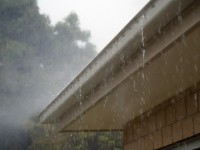When you realized that you have to deal with the consequences of the recent carpet water damage, you just got ready to give up and spend a ton of money to fix the issue, didn’t you? Obviously, minor water spills aren’t too difficult to eliminate. But what about major flood caused by washing machine breakdown, pipe rupture or even natural causes like rain flooding? Well, you’ll have to roll your sleeves up and work hard to overcome its consequences, including wet carpet.
Furthermore, it’s quite important to take immediate carpet drying measures in order to eliminate critical carpet material and underlayment damages and possibility of mold development, which also leads to significant health issues.
But, the one thing you should refrain from is panicking and deciding that the only thing you can do to fix a completely drenched carpet in your house is replace it. That would be a quite impulse decision and unnecessary waste of money unless the water that flooded the area was too dirty. That’s when you know that the wet carpet is unsavable and you have to call a carpet guy to tear it off and replace it with a new one.
Hiring a flooring contractor or professional carpet cleaner to dry the wet carpet and set it back in place will cost a lot less. HireRush.com offers a great opportunity to post a wet carpet drying request for our pros to let them combat your flooding catastrophe for you.
Or, if you get enough help from your friends and family, you may try to dry your wet carpet on your own. It will take you some time and sweat, but, in the end, you’ll end up with nice and dry carpet. This wet carpet drying guide is the only help I can offer. Hope it will come in handy.
10 steps of drying a wet carpet or how to combat water damage
- Obviously, the first thing you need to do is to make sure that all electrical appliances and extension cords are turned off and removed from the flooded area.
Safety comes first.
Don’t touch the wet electrical stuff with your bare hands. Wear rubber gloves or better call an electrician to make sure that the flooded area is safe electricity-wise. - After that, you may start working on your wet carpet. If the flood was quite significant, you’ll have to collect all the water using towels and buckets.
- Then, it’s necessary to extract as much water and moisture from the carpet as you can.
You need to act fast, as if you let the carpet remain wet for more than 3 days, it will get moldy. And then, it will have to go to the waste. - The most efficient way to suck the moisture out of the wet carpet is to rent a special water extracting vacuum and to go over the water damaged area a couple of times.
A powerful extractor will do its job. You just need to move it slowly to let it take its time to get the water out from the carpet. - Next, disconnect the carpeting from the floor on one side of the room in order to remove the wet underlayment. Make sure to pull out all the nails not to rip your carpet.
- For extra convenience, cut the underpad into several strips and take it outside to dry in the open air.
If you can do that with your carpet (without cutting it, of course) go ahead and let it air dry as well. - If the current weather or the climate of your area doesn’t allow you to do that, don’t waste too much time on drying old and pretty much ruined underlayment.
It’s not as expensive, so go out to the store and get a new sheet. - Take care of the actual carpet. Spread it on the floor and set up one-two most powerful air movers you can rent, as well as one large dehumidifier.
Let these appliances run until the carpet is completely dry.
Keep the thermostat on 75F mark to speed up the drying process of your poor wet carpet and prevent the bacteria reproduction in it. - Before you start attaching the underpad and securing the carpet back in place, make sure to check the drywall on our walls and insulation behind it.
That’s where the most bank-breaking post-flood expenses might hide.
Unfortunately, if your drywall walls and insulation got wet as well, you’ll have to replace them for sure.
As there’s no way you (or even professional contractors) can save water-damaged drywall or insulation. You can only replace it. - Once the carpet is dry, walls are checked and repaired, you may attach the carpet underlayment onto the floor, unroll the previously wet carpet and secure it in place along with the trim.
Wow! Floods are not fun.





